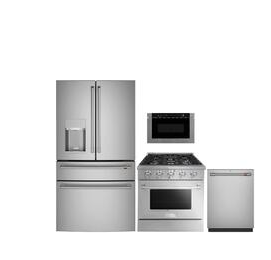How To Fit Everything into a Small Fridge
Having the fridge organized is essential for your day-to-day life. With these keys, it will be much easier than you think.
NO TO A MESSY FRIDGE

The basis of an organized fridge is that food is placed according to how cold it needs to be. Cold delays the degradation of food (most bacteria do not multiply below 8ºC).
FIRST RULE TO ORGANIZE YOUR FRIDGE: THE CORRECT ORDER OF PURCHASE

When you get home and put everything in its place, do like supermarkets: put what expires first in the front row and what you just brought in, in the back.
SECOND RULE: LET YOURSELF BE HELPED BY THE ACCESSORIES

The trays and accessories allow you to keep everything in its place and access what is in the back. Those with a handle hold better.
THIRD RULE: THINK IN PORTIONS

In order not to waste time and money, it is useful to think in portions. When buying, when cooking and when storing food. Each portion can be wrapped separately.
FOURTH RULE TO ORGANIZE THE FRIDGE: FRUIT AND VEGETABLES, SEPARATELY

Vegetables and fruit are stored in the lower drawers, the least cold area. Of course, separately, since the vegetable produces certain gases. And especially the fruit, more delicate, that does not mix with each other. The summer one goes out of the fridge. If you are going to freeze vegetables, it is better to cut them beforehand.
WHERE DO THE EGGS GO? IN OR OUT OF THE FRIDGE?

Why are they out in supermarkets, and why do we put them in the fridge at home? Eggs need a cool, dry place at a constant temperature. At the door they have an isolated place to stay dry and avoid contamination. In the supermarket, they are outside because there is always air conditioning.
WHAT GOES IN EACH AREA OF THE FRIDGE?

- Upstairs Store here the food that you are going to eat beforehand, such as pasta, meat, purées, cooked vegetables or cut fruit. The fridge must be at 5ºC. In summer it is advisable to lower it a couple of degrees more.
- Middle area It is common to put milk on the door, but dairy products are better together on a shelf: yogurts, cheeses, fresh milk. Accessories such as bottle racks or a can dispenser help keep everything in its place.
- Low zone It is the best place for fresh products, which need more cold. Here are the trays of meat, cold cuts, fish... Put them in separate and closed containers to avoid possible contamination between them.
- The door The food that withstands constant changes in temperature goes in it. It is common to put open milk here, but it is a mistake, since it is a food sensitive to these changes. In the upper area, put the butter, the jams.
- The drawers The fruit and vegetables go here, since it is the least cold area. It is better that you use paper bags, not plastic ones. The ones on bread are great as they let the food 'breathe.'
FOOD YOU KEEP IN THE FRIDGE... AND YOU SHOULDN'T

- Fruit of tropical origin such as avocados, pineapple, or bananas is better in a dark and cool place, since low temperatures prevent them from ripening. If you have not cut them and they are in good condition, leaving them out of the fridge is much better. Potatoes, onions, and garlic: Inside the fridge, the potato starches are transformed into sugar due to the cold, and their flavor changes. Put them in opaque cloth bags, better separated from onions and garlic.
- Summer fruit such as peaches, melons, tomatoes, or vegetables such as courgettes lose flavor and texture at less than 10 degrees.
- Bread and pastries Leave them in a bread basket, not in the fridge. Or make slices and freeze and thaw in the toaster.
- Dry cheeses Lose flavor and texture in the fridge. Store them in a cool place, wrapped in paper.










